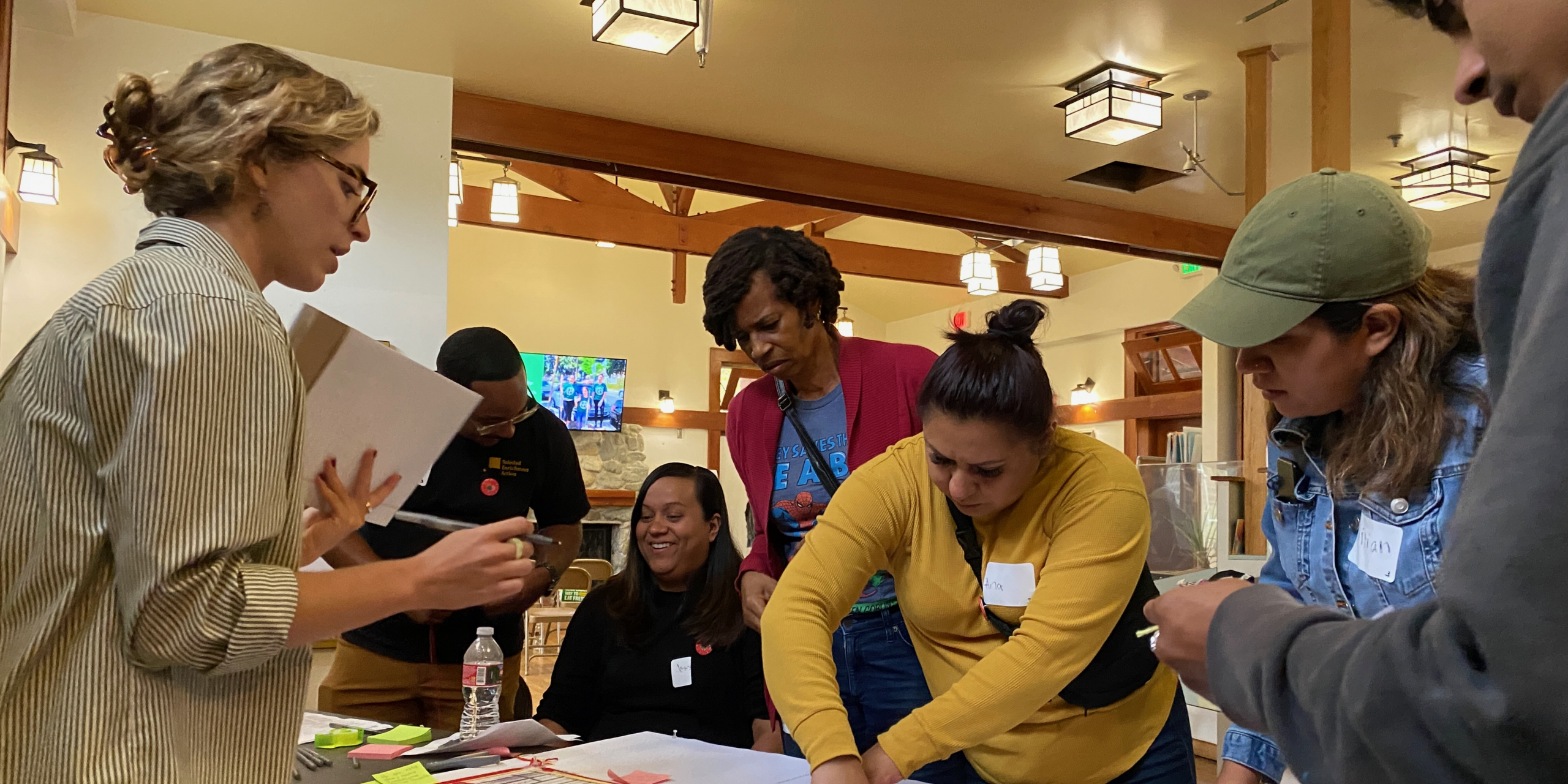The Luskin Center for Innovation co-develops decision-making framework and toolkit that centers equity in tree planting
To help address historic underinvestment and protect against extreme heat
At a workshop hosted by the Urban Forest Equity Collective, residents of L.A.’s Central Alameda neighborhood mark a map showing which streets they frequent and those they avoid to prioritize areas to plant. Photo credit: Edith de Guzman
Trees provide many human health and environmental benefits, including protection from extreme heat — one of the deadliest impacts of climate change. If the most heat-vulnerable neighborhoods had more trees, up to half of lives lost could be saved.
Planting trees in Los Angeles is challenging because of its extensive roadways, semi-arid climate, and diversity in income. To help address this, Luskin Center for Innovation researcher Edith de Guzman co-founded the Los Angeles Urban Forest Equity Collective, which is composed of forestry experts, City of Los Angeles staff, representatives from community-based organizations, and researchers working to address the legacy impacts of policies that led to some neighborhoods having fewer trees and protections from heat. Recently, the group published specific, practical solutions for community members, local groups, and municipal leaders to improve health outcomes using a novel understanding of the barriers to achieving urban forest equity and how to address them.
The researchers offer a step-by-step, decision-making framework that centers equity in tree planting, and public engagement strategies developed in partnership with community-based organizations, designed to give a voice to residents.
“We challenged ourselves to rethink ways to create vibrant urban spaces,” said Edith de Guzman. “We were determined to find a way to green communities that have been told for decades that there are never enough resources to give them the same environmental benefits that wealthier neighborhoods enjoy. And we did.”
Also just released are hyperlocal implementation strategies for two Los Angeles neighborhoods — Central Alameda and Sylmar — to demonstrate how these urban-forest equity tools can come together. The team worked with community members and city officials to identify cooling solutions to address each neighborhood’s unique challenges, from Central Alameda’s dense multi-family and public housing developments in South Los Angeles, to Sylmar’s wide streets and rows of single-family homes in the hot climate of the San Fernando Valley.
To learn more about our research on heat equity, visit our website.








